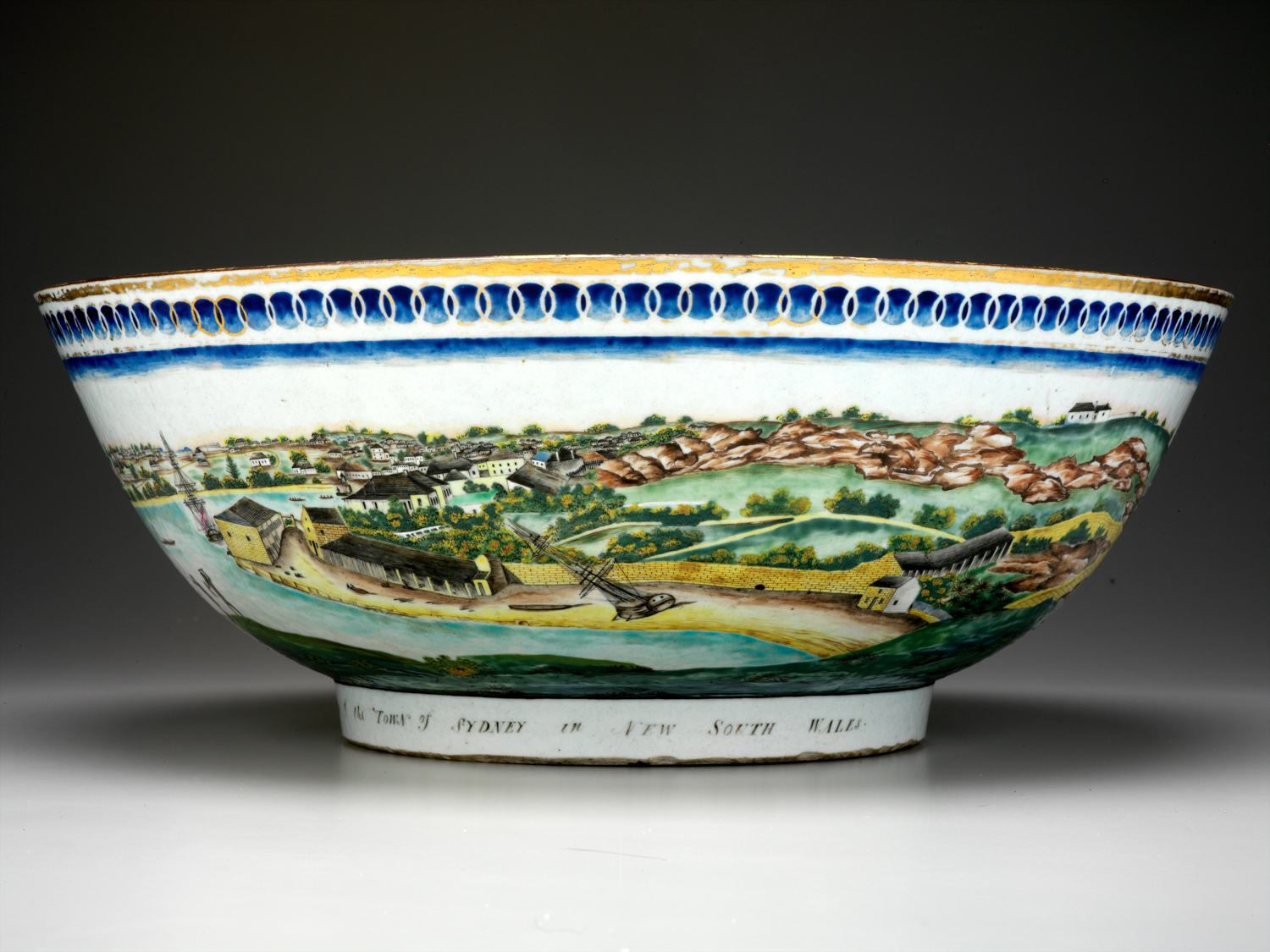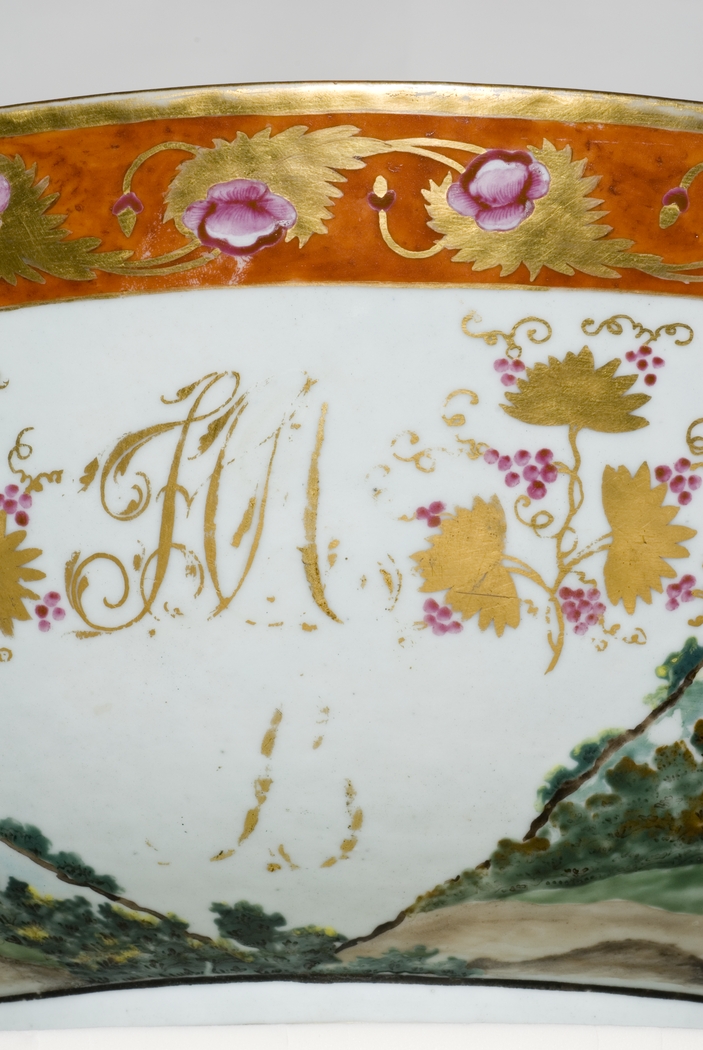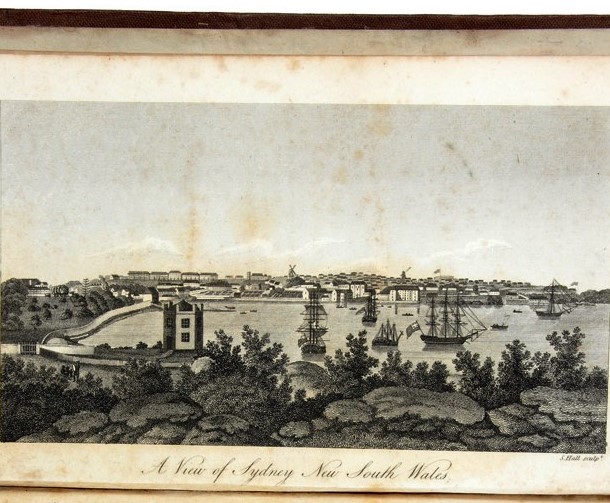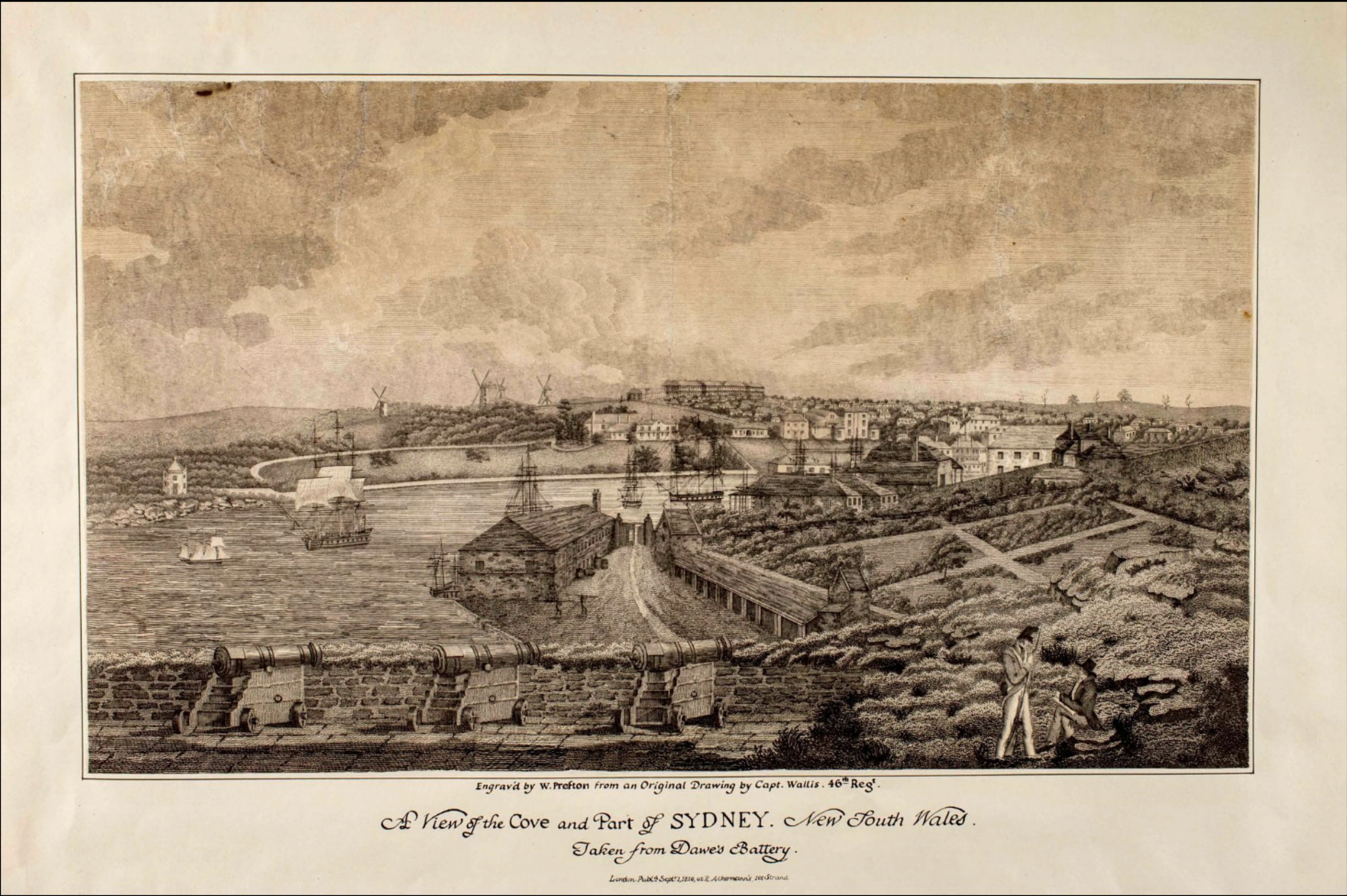
The mystery of the Sydney punchbowls
In about 1820, someone familiar with Governor Macquarie’s Sydney commissioned Chinese artists in Canton to paint a pair of large punchbowls with panoramic views of Sydney Cove. One was to be from the east (now in the State Library of NSW collection), and the other from the west (in the Australian National Maritime Museum collection). We do not know who commissioned these punchbowls, why or whether they ever came to New South Wales.
The Library’s bowl has a gilded monogram which must be the owner’s initials but has proved difficult to decipher. Furthermore, the one on the museum’s bowl is too faint to read. However, at least this mystery has now been solved. Using highly sophisticated photography techniques, museum conservator Nicholas Flood has conclusively demonstrated that the monograms are the same and hence the bowls were commissioned by the same person.
Image 1


Using Reflectance Transformation Imaging, Nicholas Flood has revealed the original monogram on the museum’s bowl (left) which is identical to that on the State Library’s bowl (right). Reproduced courtesy of the State Library of NSW.
Sydney in the 1810s
Image 2:
 The Sydney punchbowl in the State Library of NSW collection shows the view of Sydney from the eastern shore. Reproduced courtesy of the State Library of NSW.
The Sydney punchbowl in the State Library of NSW collection shows the view of Sydney from the eastern shore. Reproduced courtesy of the State Library of NSW.
Image 3:

A likely source for the Chinese painters is this 1820 engraving, A View of Sydney in New South Wales. Reproduced courtesy of Hordern House Rare Books, Sydney.
Made within three decades of the first settlement, the bowls celebrate the progress of the British colony. Even 200 years after they were first painted, it is still possible to identify the buildings and locations.
Working around from the left end of the view:
- The white building is Government House (on land called Warrane by the Gadigal First Nations people), a prefabricated structure brought out with the First Fleet as Governor Arthur Phillip’s residence. The site is adjacent to what is now the Museum of Sydney on Bridge Street.
- The beach forming the head of Sydney Cove (Warrane) would once have been a pristine site for First Nations peoples, with the Tank Stream flowing into the bay nearby. In 1841 this would be reclaimed to create Circular Quay.
- The long brown building is the Military Barracks (Tallawoladah), a remnant of the parade ground remains today in Wynyard Park.
- The square-fronted yellow building is the Dry Store (Tallawoladah), built in late 1790. It is now Sirius Park.
- The hexagonal two-storey building in the foreground (Tubowgule) was built for Governor Lachlan Macquarie’s harbour watchman, the former convict Billy Blue. Born in Jamaica, Blue may have been a freed African–American slave.
- On the hill stands St Phillips Church (Tallawoladah), with its clearly visible tower. It was built in 1810 as the first church in the colony. Rebuilt in 1856, it still stands near Wynyard Station.
- The Military Mill (Tallawoladah) was one of 15 in Sydney. They were in great demand, as convicts and settlers needed their monthly rations of flour and corn ground into flour to make bread and porridge.
- The Commissariat is the large yellow building (Tallawoladah). It was the main storehouse for foodstuffs and other goods. It stood on the site of what is now the Museum of Contemporary Art.
- The large complex of white buildings was owned by Robert Campbell (Tallawoladah). The youngest son of the Laird of Ashfield in Scotland, he leased a large portion of waterfront land (close to where the Overseas Passenger Terminal is today) and built a substantial home, wharf and storehouses.
- A small yellow flag flies over Dawes Point Battery (Tallawoladah), the first permanent fortification in Sydney.
Image 4:
 The punchbowl in the Australian National Maritime Museum collection is the view from Dawes Point on the western shore.
The punchbowl in the Australian National Maritime Museum collection is the view from Dawes Point on the western shore.
Image 5:

Panoramas were a popular means of demonstrating progress and would have been given to the Chinese artists to copy. This engraving of Dawes Point was published in London in 1821 and depicts a similar view to that on the bowl. ANMM Collection.
The Maritime Museum’s bowl centres on Campbell’s Cove from Dawes Point. From left to right:
- The rear promontory is Garden Island (Booroowang), now the base for the Royal Australian Navy.
- The next promontory is Bennelong Point (Tubowgule), where in December 1817, construction commenced on Fort Macquarie (now the site of Sydney Opera House); there is no sign of it here, suggesting that the artists were copying an earlier image.
- The large ships fly the British Ensign. Also visible are smaller European sailing craft and two Aboriginal nawi; several Aboriginal people are depicted in the foreground.
- Between the second and third of the larger British ships, Billy Blue’s Cottage is just visible (Tubowgule).
- In the distance on the eastern shore is Government House (Warrane), its substantial domain and the residences of senior officers and civil personnel.
- Dominating the right-hand half of the view is Robert Campbell’s Warehouse (Tallawoladah), which was at the bottom of George Street. His substantial whitewashed home is at the rear, and his compound includes three acres of lush walled gardens, where white peacocks and emus (not depicted) used to roam. A ship is careened in Campbell’s Cove.
- Clearly visible are the boulders and sandstone outcrops that gave this area, The Rocks (Tallawoladah), its name.
- Fort Phillip (Tallawoladah), flying a large British flag, was the main signalling post for the town and was on the site of what is now Sydney Observatory.
Precious possessions
Just as we do not know who commissioned the bowls, mystery also surrounds their history of ownership. Nothing is known of the State Library’s bowl until the 1840s when it was in England, having been acquired by a Mr Hall ‘merely as a work of art’. It remained in his home in Hythe, Kent, until 1923, when his daughter sold it to the NSW Agent-General in London for 40 pounds. It later came into the possession of noted antiquarian bookseller Francis Edwards Ltd. He sold it to Sydney antiques dealer William Little who, recognising its importance, generously presented it to the Mitchell Library in 1926.
The first mention of the museum’s punchbowl is in 1932, when the chairman of the National Art Collections Fund in England, Sir Robert Witt, wrote to the director of the Art Gallery of New South Wales advising that it would be ‘a splendid asset’. The gallery sent the details on to the Public Library of NSW (now the State Library), which replied that the bowl was not required as they had a similar one.
By then, however, it had been sold to Adaline and Peter Frelinghuysen and taken to their home in Philadelphia, USA. Adaline’s family were the Havemeyers, noted art collectors and philanthropists. The American painter Mary Cassatt was a close friend and her 1898 painting, Adaline Havemeyer in a white hat can be seen in the Metropolitan Museum of Art’s collection.
The punchbowl was not publicly seen again until 1996, when it was included in the exhibition Views of the Pearl River Delta: Macau, Canton and Hong Kong, jointly organised by the Peabody Essex Museum, USA, and the Hong Kong Museum of Art. It was then that the museum became aware of its existence. In 2006, Peter Frelinghuysen II generously donated the View of the Town of Sydney punchbowl with the assistance of the American Friends of the Australian National Maritime Museum and the USA Bicentennial Gift Fund.
